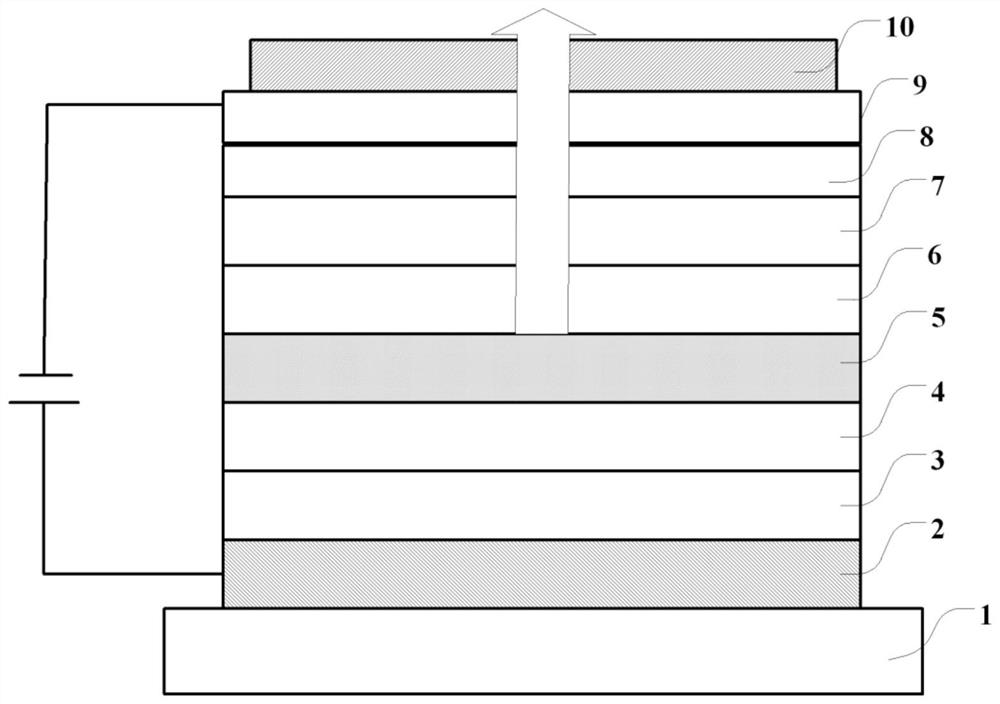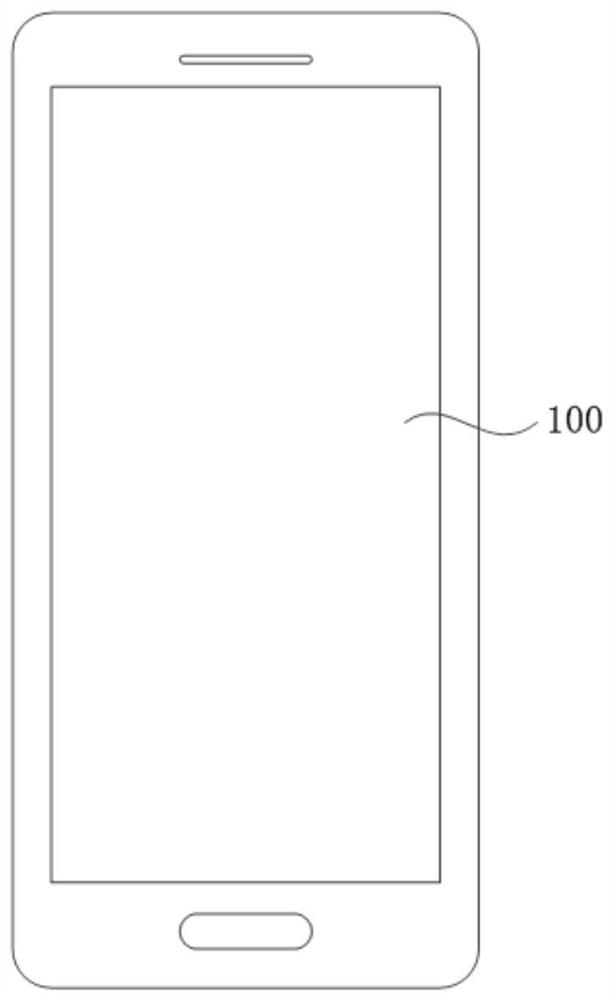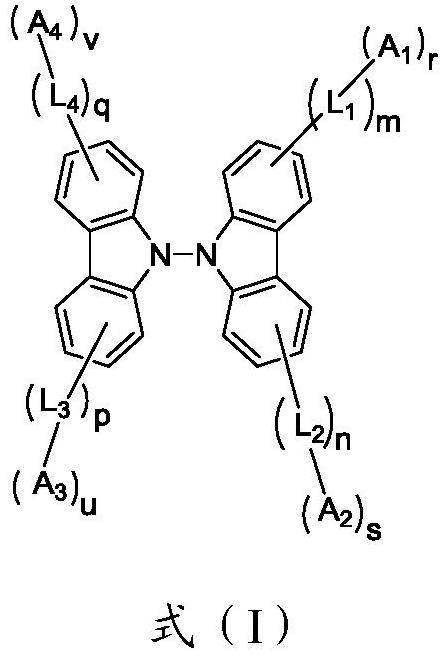A compound, an organic light-emitting display device
A light-emitting display and compound technology, which is applied in the field of compound and organic light-emitting display devices, can solve the problems of low device life, low efficiency, instability, etc., and achieve the effects of prolonging device life, widening the light-emitting area, and improving life
- Summary
- Abstract
- Description
- Claims
- Application Information
AI Technical Summary
Problems solved by technology
Method used
Image
Examples
Embodiment approach
[0081] According to one embodiment of the present invention, the compound is selected from
[0082]
[0083]
[0084]
[0085]
[0086]
[0087]
[0088] any of the.
[0089] According to one embodiment of the present invention, the compound is selected from any one of H12, H33, H44, H46, H60 and H79.
[0090] According to another aspect of the present invention, an organic light-emitting display device is provided, including an organic electroluminescent device, and the organic electroluminescent device includes:
[0091] An organic functional layer, the organic functional layer includes one or more organic film layers, and at least one of the organic film layers is a light-emitting layer;
[0092] The luminescent layer includes a luminescent material, and the luminescent material includes any one or more of the compounds described in the present invention.
[0093] According to one embodiment of the present invention, the compound is used as a host materi...
preparation Embodiment 1
[0124] Preparation Example 1 Synthesis of H12:
[0125]
[0126] Under nitrogen protection, weigh compound S2 (1.5mmol), S7 (3.2mmol), [Pd 2 (dba) 3 ]·CHCl 3(0.1mmol) and HP(tBu) 3 ·BF 4 (0.2mmol), was added to a 100mL two-necked flask. Inject 30 mL of toluene into the two-necked flask (pass N in advance 2 15min to remove oxygen), and then add 2.5mL concentration of 1M K 2 CO 3 Aqueous solution (pass N in advance 2 15min to remove oxygen), and stirred overnight at room temperature. After the reaction was completed, 20 mL of deionized water was added, followed by a few drops of 2M HCl. Extract with dichloromethane, collect the organic phase, and wash with anhydrous Na 2 SO 4 Dry processing. The dried solution was filtered, and the solvent was removed by a rotary evaporator to obtain a crude product. The crude product was purified by silica gel column chromatography, and the final purification afforded solid H12 (1.16 mmol, 71%).
[0127] MALDI-TOF MS: m / z calc...
preparation Embodiment 2
[0129] Preparation Example 2 Synthesis of H33:
[0130]
[0131] Under nitrogen protection, weigh compound S6 (1.95mmol), S8 (4.16mmol), [Pd 2 (dba) 3 ]·CHCl 3 (0.12mmol) and HP(tBu) 3 ·BF 4 (0.24mmol), was added to a 250mL two-necked flask. Inject 50mL of toluene into the two-necked flask (pass N in advance 2 15min to remove oxygen), and then add 3.5mL of 1M K2CO3 aqueous solution dropwise (pass N 2 15min to remove oxygen), and stirred overnight at room temperature. After the reaction was completed, 25 mL of deionized water was added, followed by a few drops of 2M HCl. Extract with dichloromethane, collect the organic phase, and wash with anhydrous Na 2 SO 4 Dry processing. The dried solution was filtered, and the solvent was removed by a rotary evaporator to obtain a crude product. The crude product was purified by silica gel column chromatography, and the final purification afforded solid H33 (1.32 mmol, 68%).
[0132] MALDI-TOF MS: m / z calculated: C40H20F6...
PUM
 Login to View More
Login to View More Abstract
Description
Claims
Application Information
 Login to View More
Login to View More - R&D
- Intellectual Property
- Life Sciences
- Materials
- Tech Scout
- Unparalleled Data Quality
- Higher Quality Content
- 60% Fewer Hallucinations
Browse by: Latest US Patents, China's latest patents, Technical Efficacy Thesaurus, Application Domain, Technology Topic, Popular Technical Reports.
© 2025 PatSnap. All rights reserved.Legal|Privacy policy|Modern Slavery Act Transparency Statement|Sitemap|About US| Contact US: help@patsnap.com



